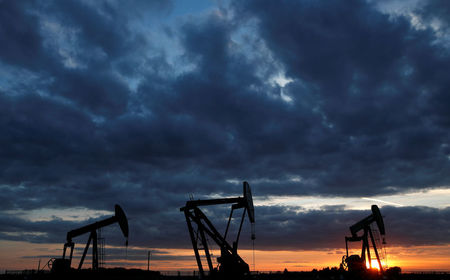
Investing.com– Oil prices soared Monday, building on last week’s rally as markets reacted to the potential for significant supply disruptions following the United States’ imposition of stringent sanctions on Russian oil exports.
At 08:20 ET (13:20 GMT), Brent Oil Futures jumped 1.4% to $80.86 a barrel, and Crude Oil WTI Futures expiring in March rose 1.4% to $76.77 a barrel.
On Friday, oil prices had rallied nearly 3% to their highest level in three months.
US sanctions on Russian oil boost prices
The Joe Biden administration introduced its most comprehensive sanctions package to date on Friday, aimed at cutting into Russia’s oil and gas revenues, which are perceived to fund its ongoing conflict in Ukraine.
The US Treasury’s latest measures target major Russian oil producers, including Gazprom (MCX:GAZP) Neft and Surgutneftegas PJSC (MCX:SNGS), as well as 183 vessels involved in transporting Russian oil.
These developments are expected to significantly disrupt Russian oil exports, compelling major importers like China and India to seek alternative suppliers in regions such as the Middle East, Africa, and the Americas.
This shift is anticipated to elevate global oil prices and increase shipping costs. Analysts suggest that the sanctions will severely impact Russian oil exports, leading Chinese independent refiners to reduce their refining output.
This upward trend reflects concerns over tightening supply and the potential for increased demand from alternative sources. Additionally, the sanctions may prompt Russia to price its crude below $60 a barrel to remain competitive, further influencing market dynamics.
“The new measures are likely to give the Trump administration additional leverage in future negotiations with Russia, as it decides whether, when, and under what terms to lift Biden-imposed sanctions,” JP Morgan analysts said in a recent note.
Demand upbeat as cold weather sweeps across US, Europe
Oil prices are also supported by expectations of heightened demand as a cold snap sweeps across key energy markets in the United States and Europe.
The frigid weather has intensified heating requirements, particularly in regions reliant on natural gas and fuel oil for home and industrial heating.
The Energy Information Administration (EIA) reported a notable drawdown in distillate inventories last week, further highlighting the surge in consumption amid the ongoing cold spell.
Industry participants are closely watching updates from major producers, including OPEC+, on potential supply adjustments to stabilize markets during the winter surge.
President-elect Donald Trump has promised to maximize US oil and natural gas production – already at record highs – in part by clearing away what he deems as unnecessary regulation and bureaucracy.
(Peter Nurse contributed to this article.)
This post is originally published on INVESTING.




